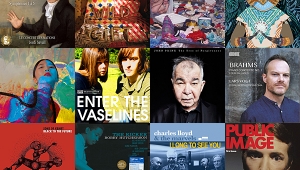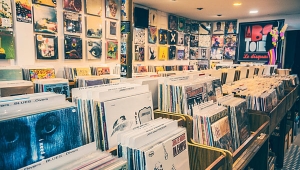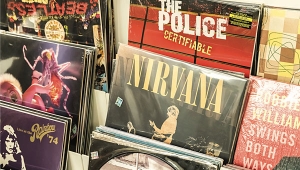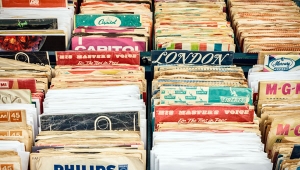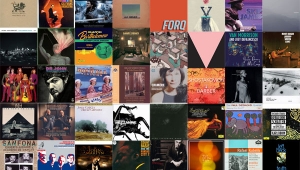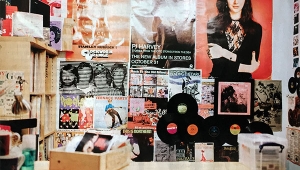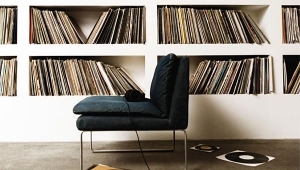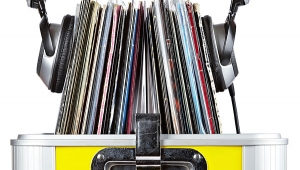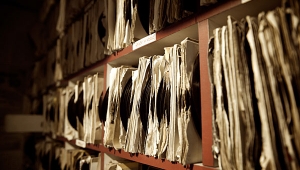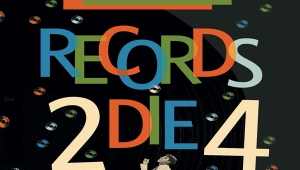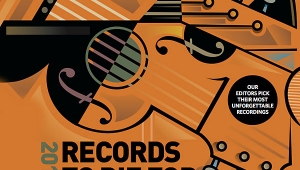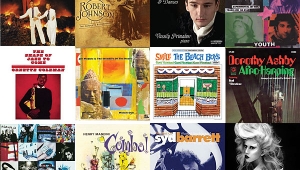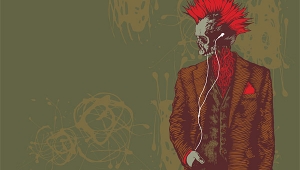| Columns Retired Columns & Blogs |
1991 Records To Die For Page 12
Bill Sommerwerck
I really ought to boycott this feature. I care more about the music and the performance than the sound. Case in point: about 12 years ago, when I lived down the road from JGH, he and Polly came for dinner. I played several of my favorite pieces. (Yes, I had surround-sound even then.) After one piece, Gordon looked me straight in the eye.
EQUALE BRASS: Bacchanales
Works by Warlock, Poulenc, Arnold, Couperin, Bartók
Nimbus NI 5004 (CD only). DDD. TT: 50:26
How many recordings in your collection sound like you're actually standing in front of a group of real musicians performing in a real hall? This is one of those one-in-a-thousand. The instruments are almost palpably there---and that's in stereo. With Ambisonic decoding, you get an excellent sense of the hall and the performers' positions in it.
MUSSORGSKY/RAVEL: Pictures at an Exhibition
STRAVINSKY: The Firebird Suite
Riccardo Muti, Philadelphia Orchestra
EMI CDC 7 47099 2 (CD only). Christopher Bishop, producer; Michael Gray, engineer. ADD. TT: 51:07
Before I acquired "taste," Pictures was one of my favorite pieces. My first recording was the classic Toscanini. Not only did Mr. T. imaginatively characterize each section, but he communicated the architecture of the work, with each section evolving logically from the next. Until the Muti performance, I had heard no stereo recording that so clearly conveyed the structure and movement of the work. Muti's Firebird Suite is equally entertaining.
KODÁLY: Concerto for Orchestra, Summer Evening, Háry János Suite
Zoltán Kodály, Budapest Philharmonic Orchestra (Concerto, Summer); Ferenc Fricsay, Berlin Radio Symphony Orchestra (Háry János)
DG 427 408-2 (CD only). ADD. TT: 67:13
VICTOR YOUNG: Around the World in 80 Days (soundtrack)
Victor Young (?), London Movie Pickup Orchestra (?)
Warner Home Video 11321 (videodisc). AA?D. TT: 2:59:00
The late '50s and very early '60s are arguably the golden age of hi-fi recording. Although microphones of that era were rather more colored than the best modern mikes, tape decks had vacuum-tube electronics and ran two- or three-track tape at 15ips (sometimes 30ips). The introduction of solid-state electronics and multitrack recording were a step (perhaps many steps) backward.
COWBOY JUNKIES: The Trinity Session
RCA 8568-1-R (LP), -2-R (CD*). Peter Moore, Perren Baker, engs.; Peter Moore, prod. DAA/DDD. TTs: 44:35, 52:54*
A bleak and beautiful album that stakes out the crossroads where Lou Reed, Hank Williams, and Robert Johnson meet. Between the a cappella opening cut and the final studio patter, the Junkies spend every note wisely. But the real star here is lead singer Margo Timmins, who's sexy in a way that Madonna can only dream about. Peter Moore's reference-quality recording---single-miked, live, in a church, direct to DAT---proves that digital per se isn't the problem. The punch line? Capturing this spacious, seductive sound cost all of $250. Both LP and CD are excellent, but the CD includes two extra tracks.
MICHAEL HURLEY/THE UNHOLY MODAL ROUNDERS/JEFFREY FREDERICKS AND THE CLAMTONES: Have Moicy!
Rounder 3010 (LP only). John Nagy, Thom Foley, engs.; John Nagy, prod. AAA. TT: 44:42
This transcendentally silly record gathers some of folk's true originals for a home-cooked batch of comic relief. If you can listen to "Hoodoo Bash" without cracking a smile, you won't get an invitation to my next party. The playing is appropriately convivial, and if Peter Stampfel has the worst singing voice on the planet, that's only part of the fun. Comparing the upfront recording perspective to The Trinity Session proves there's more than one way to skin a cat. Still in print and soon to be released on CD, says Rounder.
KATE AND ANNA McGARRIGLE: Kate and Anna McGarrigle
Carthage CGLP 4401 (LP only). John Wood, eng.; Joe Boyd, Greg Prestopino, prods. AAA. TT: 34:57
Songs of disarming charm and insight by Canada's answer to the Brontë sisters. On their debut, the McGarrigles giggle about love and wax poetic about learning to swim. If you think there's justice in this world, compare their original version of "Heart Like a Wheel" to Linda Ronstadt's famous cover. The musicianship more than matches the songwriting, with heavy hitters like Lowell George, Tony Levin, and Steve Gadd pitching in. I've never found the original Warners pressing, but my Carthage reissue is reference quality. Want palpable presence? Listen to Kate on "Go Leave." In print, LP only.
SLY AND THE FAMILY STONE: There's a Riot Goin On
Epic KE-30986 (LP), PET-30986 (CD). Robert Gratts, Willie Greer, James Greene, James Conniff, Chris Hinshaw, Jack Ashkinazy, engs.; Sylvester Stewart, Sly Stone, prods. (sic). AAA/AAD. TT: 47:31
Before there was rap, there was Sly. Hailed upon its release and forgotten just as quickly, his masterpiece about being Black in America still sounds like tomorrow's headlines. Riot is as frightening as any album ever made, and as hard to listen to. Even more frightening is hearing groups like Public Enemy speak out about how little things have changed in 20 years. The sound is part of the story, with purposeful manipulation of the vocals and the stereo separation. The instrumental tracks pack a wallop. Note the Incredible Shrinking Soundstage which mirrors Sly's growing alienation. Find the original Stars n' Stripes gatefold pressing; the Nice Price reissue doesn't cut it.
TALKING HEADS: '77
Sire SR6036 (LP). Ed Stasium, eng.; Tony Bongiovi, Lance Quinn, Talking Heads, prods. AAA. TT: 38:57
Its Rhode Island School of Design cum Sex Pistols album cover tells the story: this landmark album channels the energy of punk into building up instead of tearing down. While they ain't exactly the Captain and Tennille, David Byrne and Friends avoid nihilism's dead end and prove that you can be angry and whimsical at the same time. The eclectic arrangements foreshadow the remarkable musical growth of later Heads albums. Aspiring rock engineers should be required to listen to these pristine pre-Eno tracks before being allowed near a studio. The CD reissue even botches the artwork.
I really ought to boycott this feature. I care more about the music and the performance than the sound. Case in point: about 12 years ago, when I lived down the road from JGH, he and Polly came for dinner. I played several of my favorite pieces. (Yes, I had surround-sound even then.) After one piece, Gordon looked me straight in the eye.
"You're not an audiophile."
"Howzat?"
"You're playing the selections all the way through!"
Well, Gordon said it, I didn't. But it's the nicest insult I ever received.
I'd rather this were a list of my 25 favorite unknown works (and/or performances), such as Schumann's Konzertstück for Four Horns (Erato ECD 88212). It's funny how the most fanatic audiophiles are always talking about "musicality" and "musical communication," but won't listen to great performances in mediocre sound. High-fidelity reproduction is supposed to enhance musical pleasure; it's not an end in itself.
I've done enough live recording to conclude that even the best audiophile recordings are a travesty of live sound. As fine as Gordon's recordings on the Stereophile test disc are, they pale before the majesty and grandeur of "the real thing."
The following recordings were selected because, more than most recordings, they sound literally realistic, not because they are euphonically pleasing, or even appropriate for the music. Their sound is no more or less "musical" than live sound is "musical."
There are many outstanding direct-discs. I leave them to those who are indissolubly wed to LP. (I'm not anti-analog, just anti-LP.) Besides, they're rarely available except as used discs at high prices.
EQUALE BRASS: Bacchanales
Works by Warlock, Poulenc, Arnold, Couperin, Bartók
Nimbus NI 5004 (CD only). DDD. TT: 50:26
How many recordings in your collection sound like you're actually standing in front of a group of real musicians performing in a real hall? This is one of those one-in-a-thousand. The instruments are almost palpably there---and that's in stereo. With Ambisonic decoding, you get an excellent sense of the hall and the performers' positions in it.
These pieces were arranged for brass; none were originally written for this combination of instruments. The arrangements sound idiomatic, and the performances are light, crisp, and engaging. A fun recording. (X-4)
MUSSORGSKY/RAVEL: Pictures at an Exhibition
STRAVINSKY: The Firebird Suite
Riccardo Muti, Philadelphia Orchestra
EMI CDC 7 47099 2 (CD only). Christopher Bishop, producer; Michael Gray, engineer. ADD. TT: 51:07
Before I acquired "taste," Pictures was one of my favorite pieces. My first recording was the classic Toscanini. Not only did Mr. T. imaginatively characterize each section, but he communicated the architecture of the work, with each section evolving logically from the next. Until the Muti performance, I had heard no stereo recording that so clearly conveyed the structure and movement of the work. Muti's Firebird Suite is equally entertaining.
The recording is lifelike in its transparency and realism. You're 20!0 off the floor, with the orchestra spread in front of you. There is little sense of any intermediary between listener and performance.
KODÁLY: Concerto for Orchestra, Summer Evening, Háry János Suite
Zoltán Kodály, Budapest Philharmonic Orchestra (Concerto, Summer); Ferenc Fricsay, Berlin Radio Symphony Orchestra (Háry János)
DG 427 408-2 (CD only). ADD. TT: 67:13
VICTOR YOUNG: Around the World in 80 Days (soundtrack)
Victor Young (?), London Movie Pickup Orchestra (?)
Warner Home Video 11321 (videodisc). AA?D. TT: 2:59:00
The late '50s and very early '60s are arguably the golden age of hi-fi recording. Although microphones of that era were rather more colored than the best modern mikes, tape decks had vacuum-tube electronics and ran two- or three-track tape at 15ips (sometimes 30ips). The introduction of solid-state electronics and multitrack recording were a step (perhaps many steps) backward.
The Kodály performance of his own works (which has to be considered definitive) is almost startling in the focus and "roundness" of its images. Each instrument has a clear shape and position (both laterally and front-to-back). The stage width is not as expansive as in other recordings of this era, and the sound gets a bit congested in the loudest passages. But how often does one hear a recording with such a lifelike image?
The soundtrack of Around the World in 80 Days dates from 1956! It's closely miked, probably to suppress the reverberation that a large theater would add. (This was a roadshow presentation for large theaters. Modern films are generally shown in smaller theaters with a shorter reverb time, and usually have a more natural ambient balance.) It has life, fire, and immediacy---comparable to the best direct-discs I've heard. Running it through a surround decoder that doesn't muck up the sound (such as one of the Shures) adds an incredible sense of air and presence. ![]()
Allen St. John
COWBOY JUNKIES: The Trinity Session
RCA 8568-1-R (LP), -2-R (CD*). Peter Moore, Perren Baker, engs.; Peter Moore, prod. DAA/DDD. TTs: 44:35, 52:54*
A bleak and beautiful album that stakes out the crossroads where Lou Reed, Hank Williams, and Robert Johnson meet. Between the a cappella opening cut and the final studio patter, the Junkies spend every note wisely. But the real star here is lead singer Margo Timmins, who's sexy in a way that Madonna can only dream about. Peter Moore's reference-quality recording---single-miked, live, in a church, direct to DAT---proves that digital per se isn't the problem. The punch line? Capturing this spacious, seductive sound cost all of $250. Both LP and CD are excellent, but the CD includes two extra tracks.
MICHAEL HURLEY/THE UNHOLY MODAL ROUNDERS/JEFFREY FREDERICKS AND THE CLAMTONES: Have Moicy!
Rounder 3010 (LP only). John Nagy, Thom Foley, engs.; John Nagy, prod. AAA. TT: 44:42
This transcendentally silly record gathers some of folk's true originals for a home-cooked batch of comic relief. If you can listen to "Hoodoo Bash" without cracking a smile, you won't get an invitation to my next party. The playing is appropriately convivial, and if Peter Stampfel has the worst singing voice on the planet, that's only part of the fun. Comparing the upfront recording perspective to The Trinity Session proves there's more than one way to skin a cat. Still in print and soon to be released on CD, says Rounder.
KATE AND ANNA McGARRIGLE: Kate and Anna McGarrigle
Carthage CGLP 4401 (LP only). John Wood, eng.; Joe Boyd, Greg Prestopino, prods. AAA. TT: 34:57
Songs of disarming charm and insight by Canada's answer to the Brontë sisters. On their debut, the McGarrigles giggle about love and wax poetic about learning to swim. If you think there's justice in this world, compare their original version of "Heart Like a Wheel" to Linda Ronstadt's famous cover. The musicianship more than matches the songwriting, with heavy hitters like Lowell George, Tony Levin, and Steve Gadd pitching in. I've never found the original Warners pressing, but my Carthage reissue is reference quality. Want palpable presence? Listen to Kate on "Go Leave." In print, LP only.
SLY AND THE FAMILY STONE: There's a Riot Goin On
Epic KE-30986 (LP), PET-30986 (CD). Robert Gratts, Willie Greer, James Greene, James Conniff, Chris Hinshaw, Jack Ashkinazy, engs.; Sylvester Stewart, Sly Stone, prods. (sic). AAA/AAD. TT: 47:31
Before there was rap, there was Sly. Hailed upon its release and forgotten just as quickly, his masterpiece about being Black in America still sounds like tomorrow's headlines. Riot is as frightening as any album ever made, and as hard to listen to. Even more frightening is hearing groups like Public Enemy speak out about how little things have changed in 20 years. The sound is part of the story, with purposeful manipulation of the vocals and the stereo separation. The instrumental tracks pack a wallop. Note the Incredible Shrinking Soundstage which mirrors Sly's growing alienation. Find the original Stars n' Stripes gatefold pressing; the Nice Price reissue doesn't cut it.
TALKING HEADS: '77
Sire SR6036 (LP). Ed Stasium, eng.; Tony Bongiovi, Lance Quinn, Talking Heads, prods. AAA. TT: 38:57
Its Rhode Island School of Design cum Sex Pistols album cover tells the story: this landmark album channels the energy of punk into building up instead of tearing down. While they ain't exactly the Captain and Tennille, David Byrne and Friends avoid nihilism's dead end and prove that you can be angry and whimsical at the same time. The eclectic arrangements foreshadow the remarkable musical growth of later Heads albums. Aspiring rock engineers should be required to listen to these pristine pre-Eno tracks before being allowed near a studio. The CD reissue even botches the artwork.
- Log in or register to post comments

